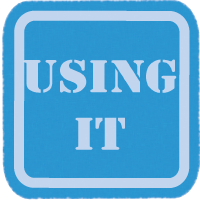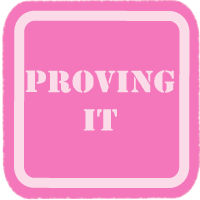

 Four Skills Activities: Reading, Writing, Speaking & Listening
Four Skills Activities: Reading, Writing, Speaking & Listening
|
back to case study |
What are the four skills?
- Reading (comprehension skill)
- Listening (comprehension skill)
- Speaking (production skill)
- Writing (production skill)
How are the four skills used in the language classroom?
Through daily activities, teachers provide learners with opportunities to develop each skill: students listen (to the teacher use the target language, to a song, to one another in a pair activity), speak (pronunciation practice, greetings, dialogue creation or recitation, songs, substitution drills, oral speed reading, role play), read (instructions, written grammar drills, cards for playing games, flashcards) and write (fill-in-the-blank sheets, sentences that describe a feeling, sight or experience, a dialogue script, a journal entry).
This approach, however, does not combine the four skills so that they can be used together to reach the same end (i.e. language development that is well-rounded).
 |
Watch the video to see how this language teacher uses four skills activities in her classroom. |
How can the four skills be used together effectively?
The four skills work in tandem when the activities that require their use are designed to support learners in the process of learning, creating and producing a specific product. Four approaches in particular are structured so that the four skills can be used simultaneously. These approaches are: the focal skill approach, content-based instruction, task-based instruction and the project-based approach.
The Focal Skill Approach
The goal of the focal skill approach is studying in the SL in order to acquire it. This second language curriculum stresses the balanced development of listening, speaking, reading and writing by measuring competency in each skill and then focusing on the development of the weakest skill. Resources like those developed by the International Center for Focal Skills (ICFS) use placement tests to identify weak skill areas.
Content-based Instruction(CBI)
Oxford (2001) describes approaches to CBI, which include theme-based & adjunct learning. Theme-based CBI focuses on a theme of high interest to students and develops a wide range of language skills around that theme. The learning of the content requires considerable exposure to a variety of forms of information, which, in turn, requires the use of all four modalities.
In the adjunct form of CBI, language and content courses are taught separately but are carefully coordinated so that literacy, oral language development and thinking skills are positively enhanced. In this approach, the content teacher presents content to students while the language teacher brings vocabulary, grammar and subskill development to students’ attention through typical exercises, all of which focus on the lexicon of the content.
Task-based Instruction(TBI)
According to Nunan (1999), task-based instruction (TBI) uses tasks or stand-aline activities which require comprehending, producing, manipulating or interacting in the target language. The amount of listening, speaking, reading and writing involved to complete the problem posed by the task is dictated by the task itself; however, most complex (multi step) real-life tasks that take learners into the world outside the classroom will utilize all four skills. TBI helps learners explore the multitude of communication opportunities provided in their surroundings. The tasks themselves are scaffolded according to the cognitive demand required to complete them and can be carried out individually, in pairs or in small cooperative groups.
Project-based approach
This approach concretizes the integration of not only the four skills but also language, culture, experience and learning strategies (Turnbull, 1999). With the careful selection of a final project that requires learners to demonstrate what they have learned through both oral and written production, the teacher plans backwards to identify what aspects of language, culture, experience and learning strategies are required to complete the end project.
back to top
What are some examples of activities that integrate the four skills?
Two activities that make use of all four skills in tandem are Self-introduction and Reading and Retell.
Self-introduction takes the answers to a series of personal questions (name, age, grade level, where you live, members of your family, favourite sports, animals, colours, subjects, etc.) and sequences them into a self introduction. Students are given large visuals to trigger each component of the self introduction. The teacher can point to each picture while modeling a self-introduction (students are listening) and then invite learners to introduce themselves (speaking) to one or two if their peers. Some of the visuals can then be changed and the students can be invited to introduce themselves to others in the class to whom they have never spoken. This activity can be adapted to become a regular (daily, weekly) warm-up activity to get learners talking in the target language. Having covered listening and speaking in the oral self-introduction, a scenario can then be created wherein learners must write a self-introduction to a potential homestay host. The same picture cues can be used, reconfigured to show a salutation, closing and signature. The picture cues provide learners with support without giving them a text to memorize.
In multilevel SL classes, graded readers can be excellent springboards for another activity that integrates the four skills- a reading and retell. First, learners select a book or story at their own level and read it. Learners are then given a template to follow to summarize their thoughts about the story (writing). The summary is designed to help learners gauge the amount of detail required in a retell. After additional practice reading the summary silently and aloud several times, learners are asked to select two or three illustrations from the book to help them tell the story. They then practice telling the story by using the pictures and remembering what they wrote in the template. Students find a partner who has not read the same story and retell (speaking) their story to one another using the selected illustrations. Partners not only listen to the retell but also complete a feedback checklist (writing) about the retell. After reading the feedback, partners switch roles.
Why are four skills activities useful?
Four skills activities in the language classroom serve many valuable purposes: they give learners scaffolded support, opportunities to create, contexts in which to use the language for exchanges of real information, evidence of their own ability (proof of learning) and, most important, confidence.
back to top
 |
Test your knowledge of the Four Skills with the Four Skills Quiz. |









 When a teacher makes use of activities that have been specially designed to incorporate several language skills simultaneously (such as reading, writing, listening, and writing), they provide their students with situations that allow for well-rounded development and progress in all areas of language learning. In her reflection, Anna refers to activities that make use of ‘the four skills’ but she is not quite sure how to plan activities that incorporate all four. In this section we will discuss the 'four skills' as well some activities that can be used in the classroom to promote all four.
When a teacher makes use of activities that have been specially designed to incorporate several language skills simultaneously (such as reading, writing, listening, and writing), they provide their students with situations that allow for well-rounded development and progress in all areas of language learning. In her reflection, Anna refers to activities that make use of ‘the four skills’ but she is not quite sure how to plan activities that incorporate all four. In this section we will discuss the 'four skills' as well some activities that can be used in the classroom to promote all four. 
